Sweden’s second largest city, Gothenburg, is the perfect combination of nature and city pulse. A stunning archipelago filled with picturesque islands, an industrial harbour gone residential hood and a vivid restaurant scene are just a few of the highlights. Welcome to the Swedish west coast – and the hometown from Ellinor Thunberg. She will introduce you into this stunning swedish city. Have fun!

Gothenburg has it all. At least if you ask me. But having lived here for more than I decade, I’m likely biased – I’m from a small town one hour north of Gothenburg, but moved to a student flat in the city centre in 2005. Ever since then, Gothenburg has played part in forming the person I am today. A 30-something writer, mom, avid coffee-drinker and design enthusiast. I am proud to call Gothenburg home and if you – like me – enjoy the seaside, Scandi design and a good restaurant I think you will love it as much as I do.
When compared to the Swedish capital Stockholm, Gothenburg always takes pride in being the relaxed alternative on the west coast. It is the fifth largest city in Scandinavia but has a true small-town feel. The city centre is walkable, there are plenty of parks and cobbled pedestrian streets offering local restaurants, cafés and indie shops. And a short tram ride away, the salty sea awaits with its many picturesque car-free islands.
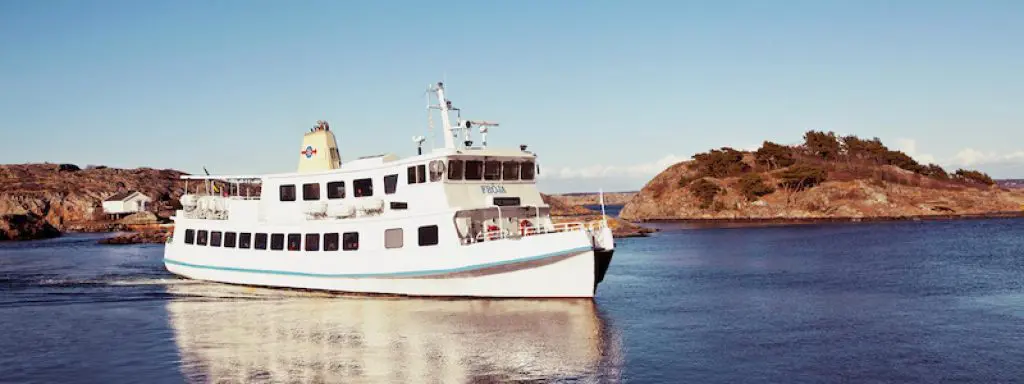
Gothenburg is located where the Göta älv river meets the ocean, along the coast between Copenhagen and Oslo. The location by the sea is an important part of its identity and there is a proud shipyard heritage. Locals generally love all things having to do with the ocean. Seafood (super fresh prawns, langoustines and lobster! Fried mackerel! So many choices!), the beach, rugged cliffs, the harbour and sailing.
The city has just over 500,000 inhabitants and this relatively small size makes it easy to see and do a lot in just a weekend, but if you wish to stay longer you will not be short of activities for a full week or more. Join me and explore Gothenburg through my seven favourite places and things to do.
1. A day trip to the archipelago
On a sunny spring or summer day, few things beat a day trip to the archipelago. My favourite is the southern part, to where you have easy access from the city centre by tram and ferry. You just need a public transport ticket (one ticket takes you through the whole city) and ferries run frequently from the harbour at Saltholmen. The ferry ride is one of the best bits, so make sure to make the most of it by finding a seat on the top deck (if your ferry has one) and enjoy the views.
The scenery is truly picturesque, with small wooden houses, cliffs and, of course, stunning ocean views. Enjoy the restaurants and cafés or bring your own picnic. My favourite island is Styrsö, where you can enjoy a visit to the restaurant and guesthouse Pensionat Styrsö Skäret. It has a really cute old-grannie-style and meals like dinner and breakfast are served in the dining hall with views of the small harbour. Another must is Café Öbergska where you can enjoy a drink or coffee.
The best way to explore the island is by foot, along the streets of the village and nature trails all the way to the Stora Rös viewpoint. Don’t miss a swim in the sea (for example, at Utterviken or Bratten), weather permitting. The streets are car-free and quiet (the local modes of transportation are golf-carts, bikes and mopeds!). If you have plenty of time you can even use the public transport ferry to island-hop and see more.
During summer you can sometimes also catch a ferry from the city centre straight to the islands. Check with the tourist centre at Kungsportsplatsen (a great idea for any practical information or recommendations!).
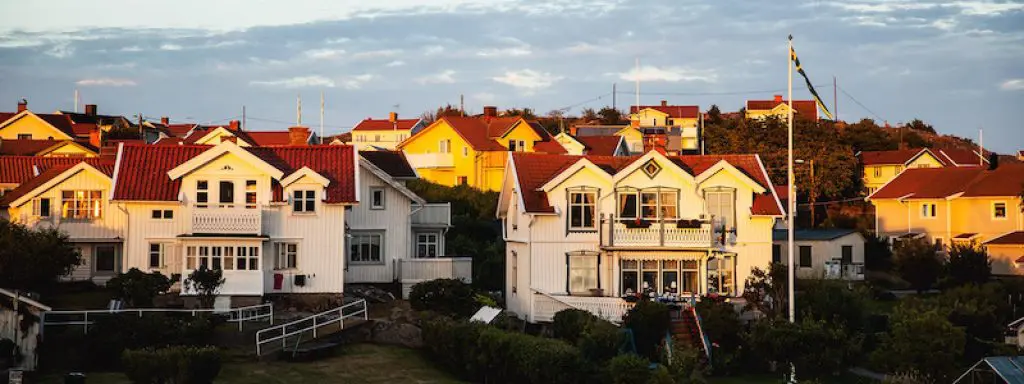
2. Saturday street food at Lindholmen
Saturday afternoon = Lindholmen Street Food Market! Pop-up restaurants, food trucks, local breweries and DJs. What could go wrong? The market has two parts; an indoor food hall and an al fresco area, so it can be enjoyed regardless of the weather. Lately, a design market also moved in here. The neighbourhood, Lindholmen, on the norther banks of the Göta älv, is part of the old industrial harbour and shipyard area that has been transformed into a residential neighbourhood, university campus and office area. In 2021 (when Gothenburg turns 400 years old) it will also be the home of the 245-metre-high skyscraper Karlatornet. The best way to get here is across the river by ferry from Stenpiren to Lindholmspiren. If you walk towards the Älvsborg bridge you can see more riverside residential neighbourhoods like Eriksberg and enjoy views of the city.
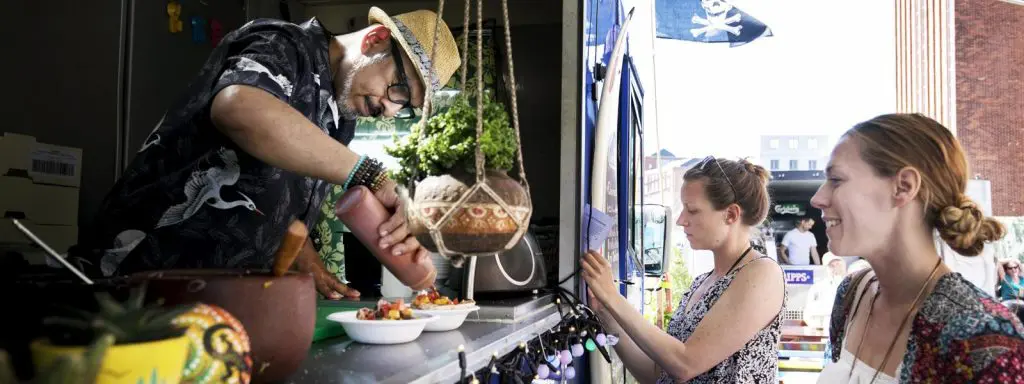
3.Enjoy a drink at Kafé Magasinet
When the sun sets, head to Tredje Långgatan and the cluster of restaurants to be found there –Brewer’s Beer Bar, Taverna Averna or Made in China along the street, and the hidden away restaurants, bars and cafés in the courtyards. My favourite is Kafé Magasinet, where you can enjoy a bite to eat, a drink or a coffee during the day or in the evening. The outdoor seating area is an orangery, which makes it rain-proof too. Nearby, at Järntorget, is the popular club Pustervik, which always has a great programme of gigs, plus club nights, bar and a restaurant.
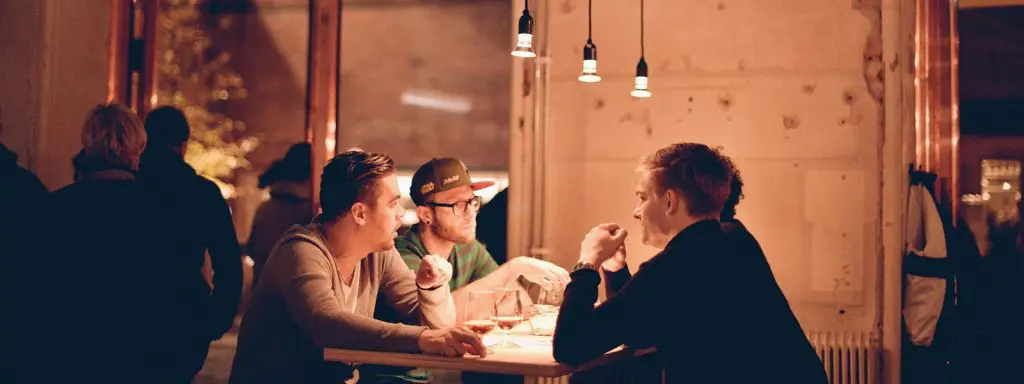
4. When in doubt, grab a Fika!
What people globally might just consider drinking coffee and eating cake is more or less a lifestyle in Sweden. Or, at least, a decent hobby and part of the daily routine in many work places. Having a ‘fika’ means socialising with friends or co-workers over coffee and something sweet to eat. My favourite fika combination is a drip coffee with a splash of milk and a freshly made cinnamon bun. One of the best places in which to enjoy this crucial part of Swedish culture is Da Matteo. The local café now has several branches, but my favourite is their bakery and coffee roastery at Magasinsgatan 17, just a stone’s throw from my office.

5. Explore the art scene
Head to the top of Kungsportsavenyn avenue, where you’ll find the Gothenburg Museum of Art. The address – Götaplatsen – is of cultural and architectural importance, being the home of the theatre, the concert hall and a Poseidon statue, in addition to the museum. The Hasselblad Centre photo gallery is also found here. Along with the Gothenburg Museum of Art, they always have interesting temporary exhibitions. In summer 2018 you can see, for example, the large-scale yarn installations by Chiharu Shiota on display. The museum has family-friendly art workshops and activities, plus a well-stocked shop with a good selection of art and design books.

6. Local design and shopping
While we’re on the subject, how about a shopping spree focusing on Swedish and even local fashion and interior design? My favourite shopping ‘hood is around the streets Magasinsgatan and Vallgatan. Local maritime fashion for everyone in the family can be found at Emma ooh Malena (Vallgatan 4). Nearby you also have the lifestyle store Grandpa (Vallgatan 3) and the Swedish brands Acne and Velour (Magasinsgatan 19). Don’t miss the organic and local denim brand Nudie Jeans or the cool statement-pieces at Weekday or Monki. When it comes to interior design, furniture and home accessories, make sure to pop by Artilleriet (Magasinsgatan 17), Rum 21 (Kyrkogatan 20-22) and Heyday (Kyrkogatan 19).
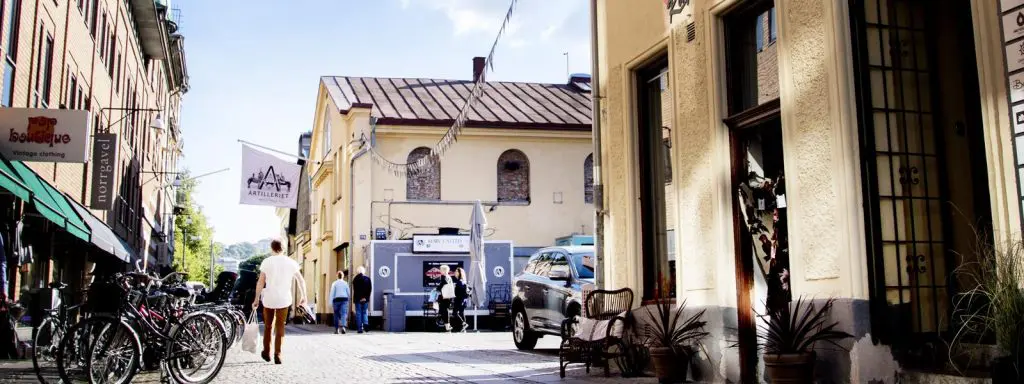
7. Family fun at Liseberg
When it comes to a day of family fun, Liseberg is the place to be. The amusement park opened in 1923 and has been a part of children’s summer holidays here ever since. Nowadays the park is also open for periods of time during Halloween and Christmas if you happen to come outside the summer season. The park has many different rides and carousels, both classic and contemporary, and there are also plenty of games, shops and entertainment venues. Personally, I really enjoy the opportunity to see concerts here during the summer. In 2018, Sabina Ddumba, The Sounds, Queens of the Stone Age, Tove Lo, The Offspring are some of the artists whow ill be on stage. The concerts are free (well, included in the entrance price anyway) and a great way to end a day in the park. Liseberg is located right next to the public transport hub Korsvägen and two more family-friendly destinations: the Universeum science centre and the Museum of World Culture.
More information: www.goteborg.com.



